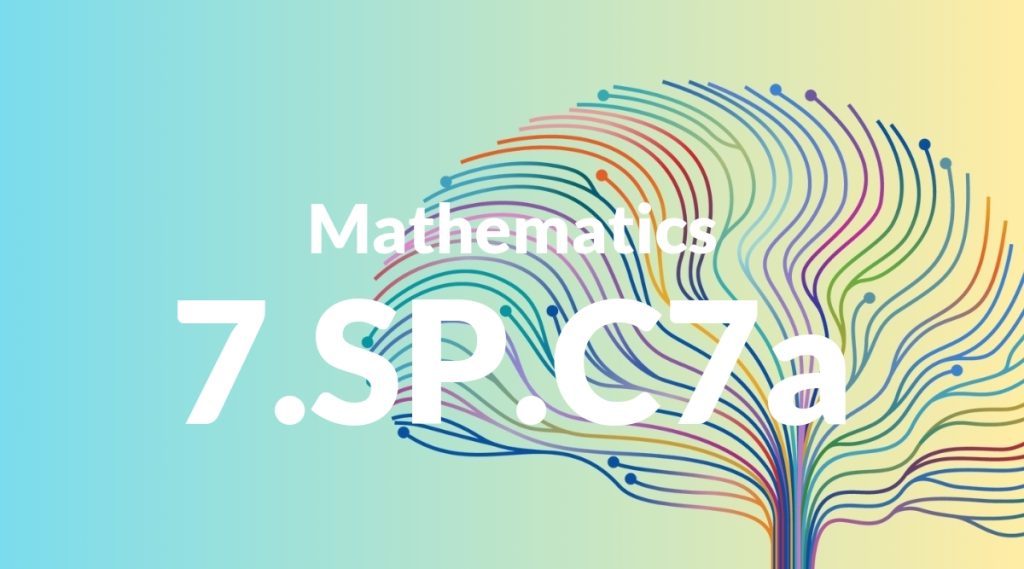Standard: 7.SP.C7a – Develop a uniform probability model by assigning equal probability to all outcomes, and use the model to determine probabilities of events. For example, if a student is selected at random from a class, find the probability that Jane will be selected and the probability that a girl will be selected.
Grade level: Grade 7
Subject: Mathematics
Domain: Statistics & Probability
Teacher Overview
This standard focuses on developing a uniform probability model by assigning equal probability to all outcomes and using the model to determine event probabilities. This is crucial in helping students understand the foundational concepts of probability, which are essential for more advanced statistical analysis. Students should have a solid grasp of basic probability, including understanding outcomes, events, and calculating simple probabilities using fractions, decimals, and percentages.
After mastering this standard, students will be prepared to explore more complex probability concepts, such as comparing different models and understanding conditional probability, which are essential for higher-level statistics.
Common Misconception 1
A common misconception is that all probability models are uniform. This is incorrect because many real-world scenarios involve non-uniform probabilities where outcomes do not have equal chances of occurring.
Intervention 1
Introduce a variety of probability models, including non-uniform models, and use real-world examples to illustrate how different scenarios require different models.
Common Misconception 2
Another misconception is confusing the probability of a single event with that of multiple events. This leads to errors in understanding how probabilities change when dealing with sequences of events.
Intervention 2
Use exercises that clearly differentiate between single and multiple event probabilities, and introduce concepts of independent and dependent events to clarify the differences.
Prerequisite Knowledge
Students should understand basic probability concepts, such as outcomes, events, and the probability of a single event occurring. Familiarity with fractions, decimals, and percentages is also necessary.
Subsequent Knowledge
Students will develop the ability to compare different probability models, understand conditional probability, and apply probability concepts to more complex and real-world situations.
Instructional Activities
- Conduct a classroom lottery where each student has an equal chance of being selected.
- Use dice and cards to create probability experiments and record the outcomes.
- Develop and analyze probability models for common games, such as coin tosses and spinner games.
- Create probability trees to visualize and calculate the probabilities of sequential events.




